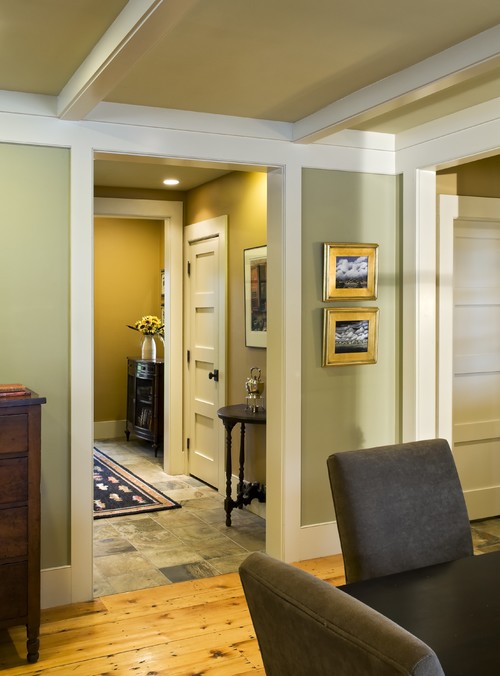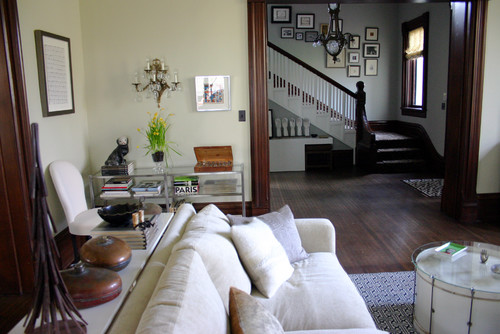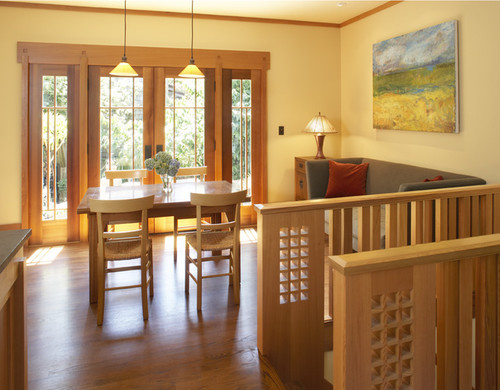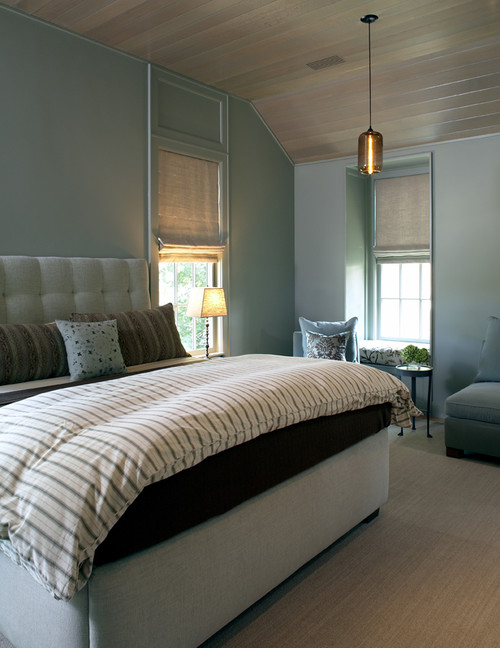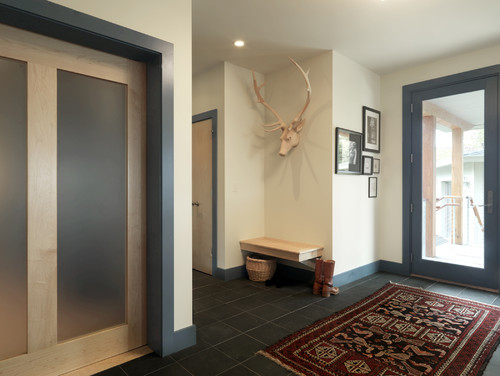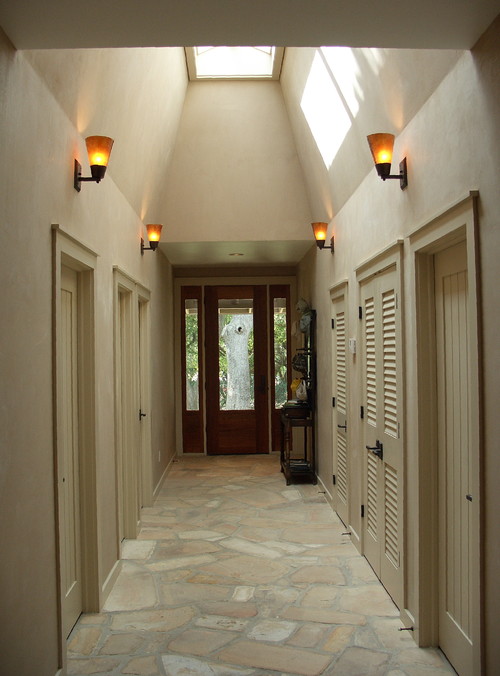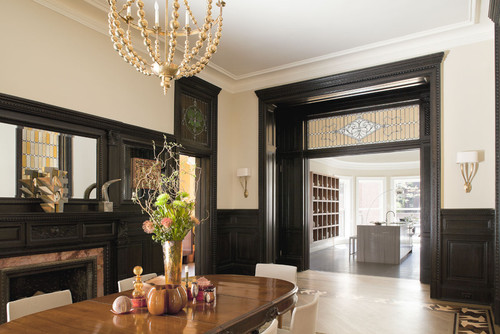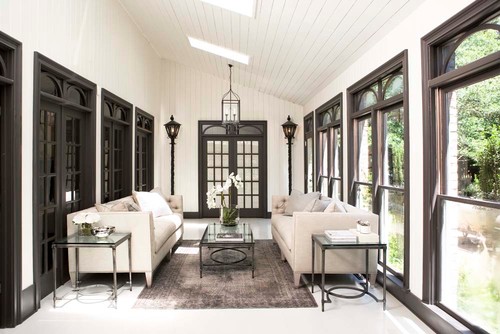If you are spending your hard earned money on a place to live, how can you have the best space possible within your budget parameters? This is a roundup of suggestions supported by past posts that you might want to consider as you decide how to create an interesting home.
1. Don't try to keep up with the neighbours
Don't go there. I've had lots of chats especially with young professional first time homeowners who feel trapped in the friends' comparison games. You know the checks and balances of where something was bought, the cost, the hot style you need to have to be "successful". This is a trap for more than young homeowners. Designing your house considering such dictates will lead to a very cookie cutter product (the show home look) and will possibly deplete your bank account at the same time. |
| Today's most popular kitchen look |
Rather than questioning if your home is up to par with the neighbour's, switch your thinking to how can I make my home unique. Not everyone is daring enough to have a teal kitchen, but it looks lovely and inviting and certainly isn't like ever other kitchen. Read this to find ways to add interest your space.
2. Don't be a slave to trends
Trends come and go and adhering to them often means changing accessories, appliances and furniture more frequently than is warranted by normal wear and tear. Are there trends that you should pay attention to? I've discussed that topic here. Would you be horrified to have white appliances, natural oak hardwood or 80's European style cabinets? ( I have all three) Is granite the only countertop you would accept? ( I have butcher block and laminate)! |
| Timeless v.s. trendy |
 |
| Chrvrons, antlers and gray |
source
If you are at a home decor store every week looking for accessories to add to your home, you might be going down the trend road. If you have chevron patterns, a chalkboard wall, antlers, cute lettered signs about family, love or keeping calm, lots of baskets, or starburst mirrors, you are an accessory trend follower. Pinterest tells all!
3. Dare to have a personal style
A more creative solution to home decor is to determine what your personal style is and stick with that, adding select pieces over time. Make choices that reflect your family lifestyle and history. What makes your home yours? Do you like antiques; are you a painted furniture aficionado; do you collect things or have travel mementos; are you into yoga and zen spaces; is music important to you; are you a painter, a wood worker, a stained glass artist or photographer? Reflect your loves in your space. Check out this post for a more in depth look at what your house says about you. |
| Distinctive zen bathroom |
This is not your average bathroom space nor will it be everyone's cup of tea. That's the thing about personal style. It should not be cookie cutter. Each element is distinctive and they are creatively combined to produce a quiet, zen like space.
 |
| Antiques and interesting finds |
This bath has an interesting combination of antiques and practical objects.
4. Forget about over matching
There is nothing that sucks the soul out of a space more than over matching. If I went through fifty spaces in a row on Pinterest on any one day, way too many of them are so perfectly matched they are downright boring. Every space needs an edge, you choose what that edge is. This post discusses the matchy match look and how to avoid it. |
| A well matched spa inspired bathroom |
 |
| Spa bathroom with interest |
This is still a small bathroom space but materials have been used more creatively to produce a distinctive look. Imagine this space without the art work over the tub. I would nix the plant. I could see myself tripping over it every time I moved.
5. Move around what you have
One of the first things I do when I begin a project with clients who has hired me to accessorize their space is ask them to pull out what they have stored. You would be surprised by some of the finds that went from the basement to front and centre. This post will give you an idea of this type of thinking.With so many ways to to create inviting, individual environments, do you have a favourite one that works in your space?















